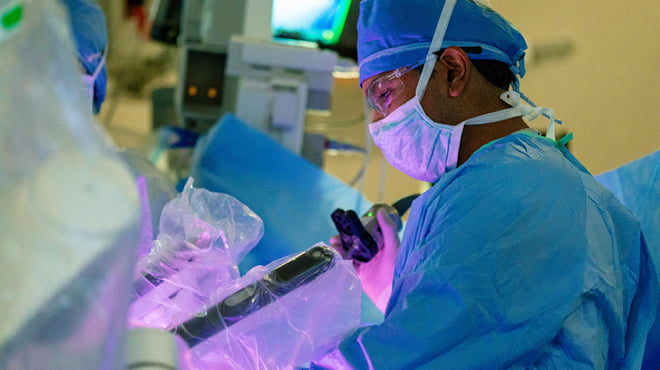Minimally invasive surgery: small incisions, big benefits

A lot has changed in operating practices in the last 30 years, with the most significant advancements in minimally invasive techniques. In the 1990s, removing an inflamed appendix required a 2- to 4-inch incision, and the patient needed to stay in the hospital for many days. Now the appendix can be removed through a few small abdominal incisions, usually less than one-half inch, and most patients can go home the same day.
If you're facing the prospect of surgery, here's what you should know about minimally invasive procedures.
What is minimally invasive surgery?
In minimally invasive surgery, surgeons use various techniques to operate with less injury to the body than with open surgery. Most patients who have a minimally invasive surgery can go home the same day or remain in the hospital for a shorter period.
Laparoscopy was one of the first types of minimally invasive surgery. It's completed through one or more small incisions. The surgeon uses small tubes, cameras and surgical instruments to complete the surgery.
Another minimally invasive surgery is robotic surgery. It provides a magnified, 3D view of the surgical site and helps the surgeon operate with precision, flexibility and control.
Types of minimally invasive surgeries
Minimally invasive surgeries have now become the standard surgical techniques in many routine operations, including:
- Anti-reflux surgery, sometimes called hiatal hernia repair, to relieve gastroesophageal reflux disease (GERD)
- Appendectomy, removal of the appendix
- Cancer surgery, to diagnose or remove the cancer
- Cholecystectomy, removal of the gallbladder
- Colectomy to remove parts of a diseased colon or colon cancer
- Ear, nose and throat surgery
- Endovascular surgery to treat or repair blood vessels
- Gynecologic surgery to treat the uterus and ovaries
- Splenectomy to remove the spleen
- Urologic surgery for bladder and kidney surgeries
Minimally invasive surgery benefits
Continual innovations in minimally invasive surgery make it beneficial for people with a wide range of conditions.
The advantages of minimally invasive operating techniques include:
- Less pain
- Faster recovery
- Quicker return to work
- Better cosmetic results with little scarring
For many patients, the cosmetic results have been outstanding, resulting in surgeries with little to no scarring. Often, the incisional scars are virtually invisible three months after the operation.
Patients often report that their postoperative pain is significantly less than expected and can easily be managed by over-the-counter pain medications. Most can return to daily activities quickly with little or no postoperative restrictions. Occasionally, a patient has undergone a minimally invasive surgical procedure on a Friday and returned to work on the following Monday.
Minimally invasive surgery is appropriate for many patients and conditions. Talk with a surgeon if you need surgery and think you may be a candidate for minimally invasive techniques.
Michael Young, M.D., is a general surgeon in New Prague, Minnesota.



